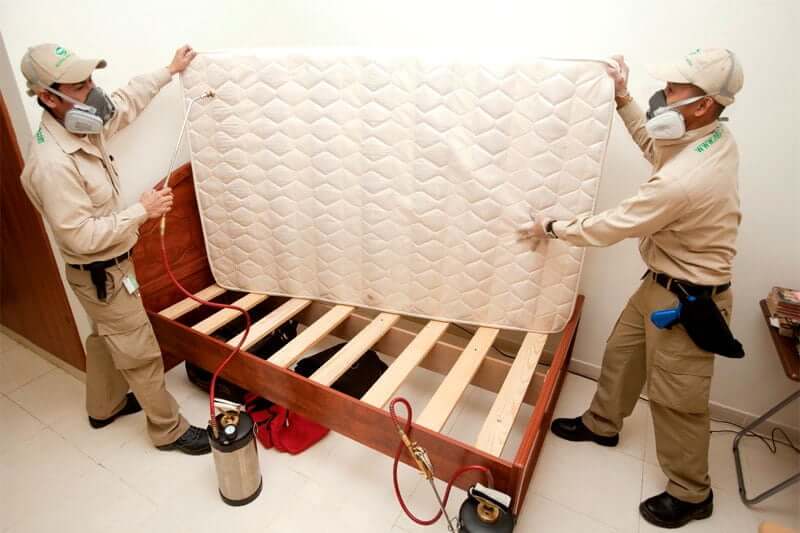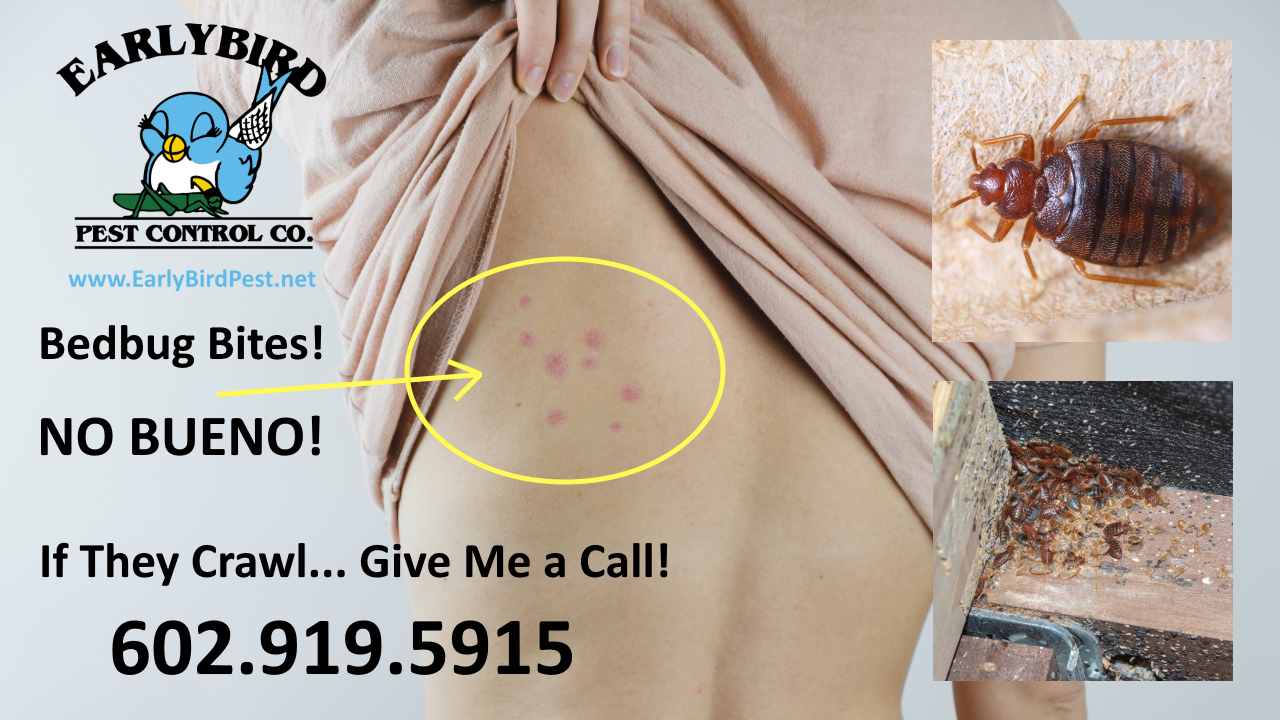How to Identify Bed Bug Bites and Prevent Future Infestations
How to Identify Bed Bug Bites and Prevent Future Infestations
Blog Article
Get Educated About the Kinds of Bug Control Techniques and Their Benefits for Property Owners
Understanding the different insect control approaches readily available to homeowners is vital for efficient pest management. Home owners who are knowledgeable can make calculated choices that not only address parasite problems yet likewise improve the general quality of their living environment.
Chemical Pest Control Approaches
Chemical pest control methods are a vital element of integrated pest monitoring strategies for property owners looking for reliable options to pest invasions. These approaches include the application of chemical materials developed to remove or prevent parasites that endanger personal effects, health and wellness, and comfort. Usual chemicals utilized consist of pesticides, rodenticides, herbicides, and fungicides, each customized to target certain parasites.
The main advantage of chemical parasite control is its fast efficiency; numerous formulations give prompt results, decreasing pest populaces substantially in a brief time. In addition, breakthroughs in chemical solutions have actually resulted in products that are much more ecologically friendly and have lower toxicity degrees for non-target microorganisms when used appropriately.

Biological Bug Control Techniques
Natural parasite control methods have actually obtained importance as property owners seek safer and extra lasting alternatives to conventional chemical approaches. Organic pest control strategies utilize natural predators, parasites, or microorganisms to handle parasite populaces successfully. This approach is not only eco-friendly yet likewise minimizes the risk of damage to non-target varieties, including beneficial pests and wildlife.
Among the most typical organic control approaches entails presenting all-natural predators right into the environment. For instance, ladybugs can be used to control aphid populaces, while nematodes target soil-dwelling bugs like grubs. Furthermore, parasitoids-- microorganisms that survive or within a host-- can be used to control particular parasite varieties by laying eggs inside them, eventually leading to their death.
An additional strategy is making use of biopesticides, which are stemmed from natural materials such as minerals, plants, or germs (bed bug exterminator). These items can properly target bugs while posing very little danger to family pets and people. Overall, biological insect control strategies give homeowners with an efficient methods of pest administration that straightens with ecological principles, advertising a much healthier living atmosphere while reducing reliance on artificial chemicals
Mechanical Insect Control Approaches
Mechanical bug control strategies encompass a variety of approaches that literally avoid or eliminate bugs without making use of chemicals. These techniques are specifically useful for home owners looking for ecologically pleasant options while ensuring the safety and security of their living spaces.
One typical method is the usage of obstacles, such as displays, webs, and catches, which protect against insects from getting in homes or details locations. As an example, installing home window screens can successfully keep bugs out, while making use of physical barriers around yards can discourage larger parasites like deer or bunnies. Furthermore, mechanical traps developed for rodents can capture and eliminate these parasites without the demand for toxic materials.
Another efficient method involves using brooms and vacuum cleaners to remove insects directly from surfaces. Normal cleaning and upkeep can considerably decrease pest populaces by removing food resources and concealing areas. Moreover, using devices like ultrasonic pest repellents can deter numerous bugs through acoustic wave that are unpleasant to them however faint to people.
Social Insect Control Practices
Social bug control techniques focus on customizing the setting and monitoring strategies to develop exterminator conditions that are less for pest infestations. These techniques are fundamental in maintaining a balanced ecosystem and lowering the reliance on chemical interventions. By modifying agricultural techniques, house owners can effectively deter bugs while promoting plant health.
One usual technique consists of plant turning, which interferes with the life process of bugs by transforming the sorts of plants grown in a details location (bed bug exterminator). This not only lessens pest populations but also enhances soil health. Additionally, intercropping-- planting diverse plants in closeness-- can puzzle bugs and lower their capability to locate their favored host plants
Water administration is another essential element of cultural techniques. Proper irrigation techniques can avoid standing water, which works as a reproduction ground for insects and other insects. Keeping cleanliness in and around the home, such as regularly getting rid of debris and food waste, can dramatically minimize insect destination.
Incorporating these cultural practices into a thorough insect administration technique enables house owners to develop a setting that normally prevents parasites, therefore boosting the effectiveness of various other control methods while promoting lasting gardening and landscaping.

Integrated Insect Management Approaches
Integrated Pest Administration (IPM) represents a holistic strategy that incorporates numerous strategies to efficiently manage pest populations while reducing environmental influence. This approach integrates biological, social, physical, and chemical techniques to attain sustainable parasite control. By examining pest populaces and their all-natural adversaries, IPM emphasizes tracking and identifying bugs prior to implementing control procedures.
Among the core principles of IPM is using limits, which establish the degree of pest activity that necessitates intervention. This ensures that treatments are used just when needed, reducing the dependence on chemical pesticides. Biological control techniques, such as introducing all-natural predators or bloodsuckers, work in conjunction with cultural practices like plant turning and habitat adjustment to disrupt pest life cycles.
Furthermore, IPM encourages the usage of least-toxic chemical options when treatment is necessary, prioritizing items that position very little threat to non-target microorganisms and the atmosphere. For homeowners, taking on IPM approaches not only improves the effectiveness of bug administration but likewise advertises a much healthier living atmosphere, cultivating biodiversity and reducing chemical exposure. Inevitably, IPM encourages property owners to make informed decisions that balance parasite control with eco-friendly obligation.
Verdict
To conclude, recognizing the different parasite control techniques encourages homeowners to make educated choices regarding pest monitoring. Each technique-- chemical, biological, mechanical, social, and incorporated parasite monitoring-- supplies distinctive advantages that deal with different needs and choices. By choosing proper methods, house owners can efficiently handle pest populaces while lessening health and wellness threats and ecological impacts. This educated method adds to a healthier living setting, advertising overall wellness for families and family pets alike.
Recognizing the numerous bug control techniques offered to home owners is vital for effective insect monitoring.Chemical bug control techniques are a vital part of incorporated pest management strategies for house owners looking for efficient options to pest infestations. Overall, organic bug control techniques provide homeowners with a reliable means of insect monitoring that straightens with environmental principles, promoting a much healthier living environment while minimizing dependence on artificial chemicals.
Cultural bug control techniques focus on changing the environment and administration techniques to create conditions that are much less helpful to pest problems.In final thought, understanding the various bug control techniques equips house owners to make informed choices concerning pest monitoring.
Report this page